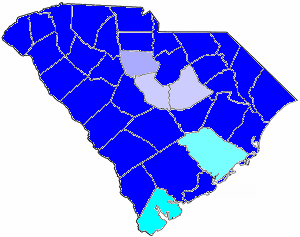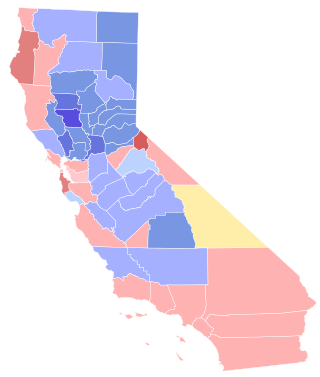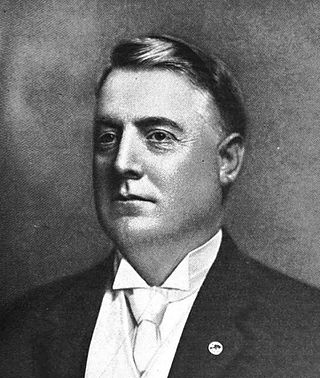Establishment
In 1905, millionaire newspaper publisher William Randolph Hearst made a high-profile run for Mayor of New York City under the banner of the Municipal Ownership League. Hearst ran on a reform ticket in opposition to incumbent Tammany Hall Democrat George B. McClellan, Jr. and Republican William Mills Ivins, Sr. [1] Hearst narrowly missed election, losing to the Democrat by fewer than 3,500 votes out of nearly 600,000 cast between the three candidates, with the New York Supreme Court ultimately deciding the matter in favor of Tammany Hall on June 30 amidst charges of electoral fraud. [2]
In the wake of its defeat, the Municipal Ownership League was replaced by a new political organization with a less socialistically oriented name: the Independence League of New York.
In 1906, Hearst again ran for political office, this time being defeated in the race for Governor of New York on a Democratic–Independence League fusion ticket. Despite his own loss, other members of the fusion slate were elected, including Lewis S. Chanler as lieutenant governor, John S. Whalen as Secretary of State, Martin H. Glynn as comptroller, Julius Hauser as treasurer, William S. Jackson as Attorney General, and Frederick Skene as state engineer.
Parallel Independence Leagues were active at the same time in several other states, including California and Massachusetts. In the latter, state party nominee Thomas L. Hisgen garnered a substantial number of votes in the 1907 election for governor, topping the candidate of the Democratic Party for second place. Prospects seemed bright for a new national political organization to replace the Democrats as the chief opposition party in the United States.
1908 Presidential convention
Buoyed by the promising results for Thomas Hisgen in Massachusetts, the Independence League moved to establish a national presence as the Independence Party ahead of the election of 1908 at a convention held in Chicago. The gathering was convened on July 27, 1908, in a hall bedecked with patriotic red-white-and-blue bunting and streamers. [3]
Although Hisgen was regarded as a favorite to win nomination prior to convocation, the nominating convention's decision was not unanimous nor the nomination process without acrimony, requiring three ballots of the assembled delegates to reach an ultimate decision. The first person nominated was former Congressman Milford W. Howard of Fort Payne, Alabama, placed into consideration by a long-winded speech which drew catcalls. [4] The Howard nomination was followed by a speech by Rev. Roland D. Sawyer of Massachusetts, who formally placed Hisgen's name into the pool of candidates. [4] This was followed by the nomination of Georgian John Temple Graves, the editor of a Hearst newspaper. [4]
An attempt by a Kansas delegate to put the name of Democratic Party standard bearer William Jennings Bryan into nomination was met with raucous jeering which briefly prevented the speaker from continuing. [4] With order restored, the speaker continued in his effort to formally nominate Bryan, causing an even more fierce explosion of rage and protest, as a report in The New York Times indicates:
"A scene of riot immediately followed, several delegates attempting to reach the rostrum for the purpose of offering physical violence to the speaker. 'I intend, if I am allowed to finish, to nominate Mr. William J. Bryan,' said Mr. [J.I.] Sheppard.
"The hall broke into a wild uproar, a dozen delegates vainly struggling in the main aisle in an attempt to reach Mr. Sheppard. Canes and fists were shaken at him furiously, while howls of execration went up from all sides of the hall." [4]
Only after an extended period of tumult was order restored and Sheppard ruled out of order on the grounds of having nominated an individual who was not a member of the Independence Party. [4] Sheppard walked from the rostrum under protection of the convention's two sergeants of arms, but was still swung at with a cane by a New York delegate as he passed down the aisle, with the New Yorker forcibly restrained. [4] An announcement shortly followed that Sheppard had been removed as a member of the National Committee of the Independence Party. [4]
With the nominations finally complete, convention voting ensued. The first ballot saw a tally of 396 votes for Hisgen, 213 for Graves, 200 for Howard, 71 for Reuben R. Lyon, and 49 for William Randolph Hearst. [4] A second ballot brought Hisgen to the doorstep of nomination, gathering 590 votes, compared to 189 for Graves and 109 for Howard. [4] Only in the early morning hours of Wednesday, July 29 did Hisgen go over the top, winning the nomination. [4] Graves was chosen as Hisgen's Vice-Presidential running mate by the gathering.
The party platform adopted by the Chicago convention declared that corporate corruption, waste in government spending, the exploitative pricing of monopolies, a costly tariff, and rule by political machines had exacted a costly economic toll on both investors and working people alike. [4] Both the Republican and Democratic parties, were to blame, the Independence Party declared, and it cast itself as the banner-bearer in the effort "to wrest the conduct of public affairs from the hands of selfish interests, political tricksters, and corrupt bosses" and to make government "an agency for the common good." [4]
The party platform argued against corrupt machine politics, for the eight-hour work day, against the use of judicial injunctions to settle labor disputes, for the creation of a Department of Labor, for improved workplace safety, and for the establishment of a central bank. [4] The organization expressed its disapproval of maintenance of blacklists against striking workers and against the use of prison labor for the production of goods for the marketplace. [4] The organization also favored broad implementation of the initiative and referendum system and in favor of the power of recall of elected officials. [4]
Although mildly social democratic in content, the platform of the Independence Party took pains to cast the organization as "a conservative force in American politics, devoted to the preservation of American liberty and independence." [4]
Final efforts
The national party collapsed after the 1908 election, in which Hisgen and Graves won less than one percent of the popular vote.
Hearst ran again for Mayor of New York in 1909, and for lieutenant governor in 1910, but was defeated both times. The New York Independence League continued to nominate candidates for Governor and Lieutenant Governor of New York until the state election of 1914.

The 1852 United States presidential election was the 17th quadrennial presidential election, held on Tuesday, November 2, 1852. Democrat Franklin Pierce defeated Whig nominee General Winfield Scott. A third party candidate from the Free Soil party, John P. Hale, also ran and came in third place, but got no electoral votes.

The 1904 United States presidential election was the 30th quadrennial presidential election, held on Tuesday, November 8, 1904. Incumbent Republican President Theodore Roosevelt defeated the conservative Democratic nominee, Alton B. Parker. Roosevelt's victory made him the first president who ascended to the presidency upon the death of his predecessor to win a full term in his own right. This was also the second presidential election in which both major party candidates were registered in the same home state; the others have been in 1860, 1920, 1940, 1944, and 2016.

The 1908 United States presidential election was the 31st quadrennial presidential election, held on Tuesday, November 3, 1908. Republican Party nominee William Howard Taft defeated three-time Democratic nominee William Jennings Bryan.

The 1890 South Carolina gubernatorial election was held on Tuesday November 4, to elect the governor of South Carolina. Ben Tillman was nominated by the Democrats and easily won the general election against A.C. Haskell to become the 84th governor of South Carolina.
The 1932 Democratic National Convention was held in Chicago, Illinois June 27 – July 2, 1932. The convention resulted in the nomination of Governor Franklin D. Roosevelt of New York for president and Speaker of the House John N. Garner from Texas for vice president. Beulah Rebecca Hooks Hannah Tingley was a member of the Democratic National Committee and Chair of the Democratic Party of Florida. She seconded the nomination of Franklin Delano Roosevelt, becoming the second woman to address a Democratic National Convention. According to the White House Historical Association, Happy Days Are Here Again was the campaign song of the convention.
The Municipal Ownership League was an American third party formed in 1904 by controversial newspaper magnate and Congressman William Randolph Hearst for the purpose of contesting elections in New York City.

The 1904 Democratic National Convention was an American presidential nominating convention that ran from July 6 through 10 in the Coliseum of the St. Louis Exposition and Music Hall in St. Louis, Missouri. Breaking with eight years of control by the Democratic Party's reform wing, the convention nominated conservative Judge Alton B. Parker of New York for president and Henry G. Davis of West Virginia for vice president.

The 1912 New York state election was held on November 5, 1912, to elect the governor, the lieutenant governor, the Secretary of State, the state comptroller, the attorney general, the state treasurer, the state engineer and two judges of the New York Court of Appeals, as well as all members of the New York State Assembly and the New York State Senate. The voters were also asked if they approved a $50,000,000 bond issue for "good roads construction," which was answered in the affirmative, with 657,548 For and 281,265 Against.

The 1910 New York state election was held on November 8, 1910, to elect the governor, the lieutenant governor, the Secretary of State, the state comptroller, the attorney general, the state treasurer, the state engineer and two judges of the New York Court of Appeals, as well as all members of the New York State Assembly and the New York State Senate. The voters were also asked if they approved a $2,500,000 bond issue for the improvement and extension of Palisades Interstate Park, which was answered in the affirmative, with 349,281 For and 285,910 Against. A constitutional amendment which proposed to add two judges to the New York Court of Appeals and to increase the judges' salaries was rejected by a margin of only 292 votes, with 332,300 For and 332,592 Against.

The 1908 New York state election was held on November 3, 1908, to elect the governor, the lieutenant governor, the Secretary of State, the state comptroller, the attorney general, the state treasurer, the state engineer and a judge of the New York Court of Appeals, as well as all members of the New York State Assembly and the New York State Senate.

The 1906 New York state election was held on November 6, 1906, to elect the governor, the lieutenant governor, the Secretary of State, the state comptroller, the attorney general, the state treasurer and the state engineer, as well as all members of the New York State Assembly and the New York State Senate.

The 1872 Democratic National Convention was a presidential nominating convention held at Ford's Grand Opera House on East Fayette Street, between North Howard and North Eutaw Streets, in Baltimore, Maryland on July 9 and 10, 1872. It resulted in the nomination of newspaper publisher Horace Greeley of New York and Governor Benjamin Gratz Brown of Missouri for president and vice president, a ticket previously nominated by the rump Liberal Republican faction convention meeting, also held in Baltimore's newly built premier Opera House of nationally well-known theatre owner/operator John T. Ford of the major Republican Party, which had already re-nominated incumbent President Ulysses S. Grant of the regular Republicans for another term.

The 1906 California gubernatorial election was held on November 6, 1906. James Gillet won the 1906 election and became the governor of California.

Thomas Louis Hisgen was an American petroleum producer and politician.

John Temple Graves was an American newspaper editor who is best known for being the vice presidential nominee of the Independence Party in the presidential election of 1908.

The 1908 U.S. Presidential election occurred in the backdrop of the Progressive achievements of U.S. President Theodore Roosevelt's second term as well as against the U.S. recovery following the Panic of 1907. In this election, Roosevelt's chosen successor, Republican William Howard Taft, ran in large part on Roosevelt's Progressive legacy and decisively defeated former Congressman and three-time Democratic U.S. Presidential candidate William Jennings Bryan. Overall, the 1908 presidential campaign and election were about labor issues, trusts, campaign finance reform, imperialism, and corruption.
Al Smith, former governor of New York and the 1928 Democratic presidential nominee, ran an unsuccessful campaign for the party's 1932 presidential nomination. He ultimately lost to Franklin Delano Roosevelt, his one-time political ally, who would go on to win the general election.

In the Chicago mayoral election of 1905, Democrat Edward F. Dunne defeated Republican John Maynard Harlan and Socialist John Collins.

John B. Moran was an American politician who served as District Attorney of Suffolk County, Massachusetts, from 1905 to 1909.

The 1907 Massachusetts gubernatorial election was held on November 5. Incumbent Republican Governor Curtis Guild Jr. was re-elected for a third one-year term.



















